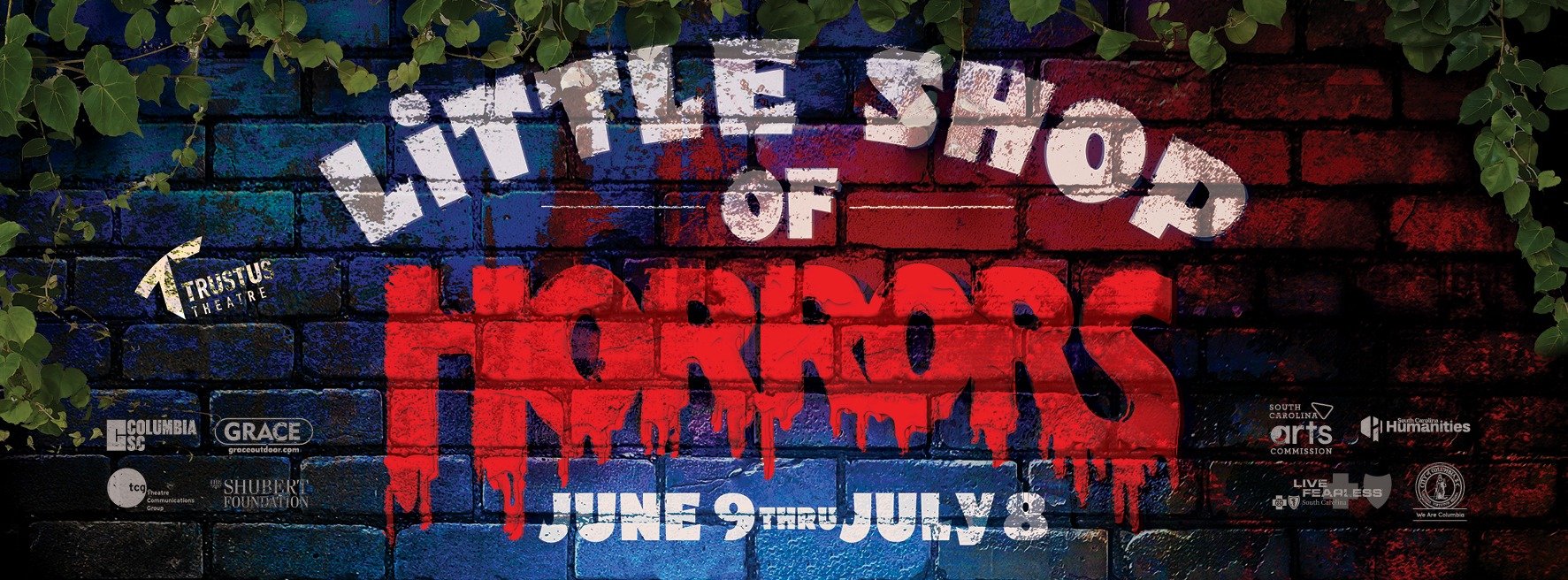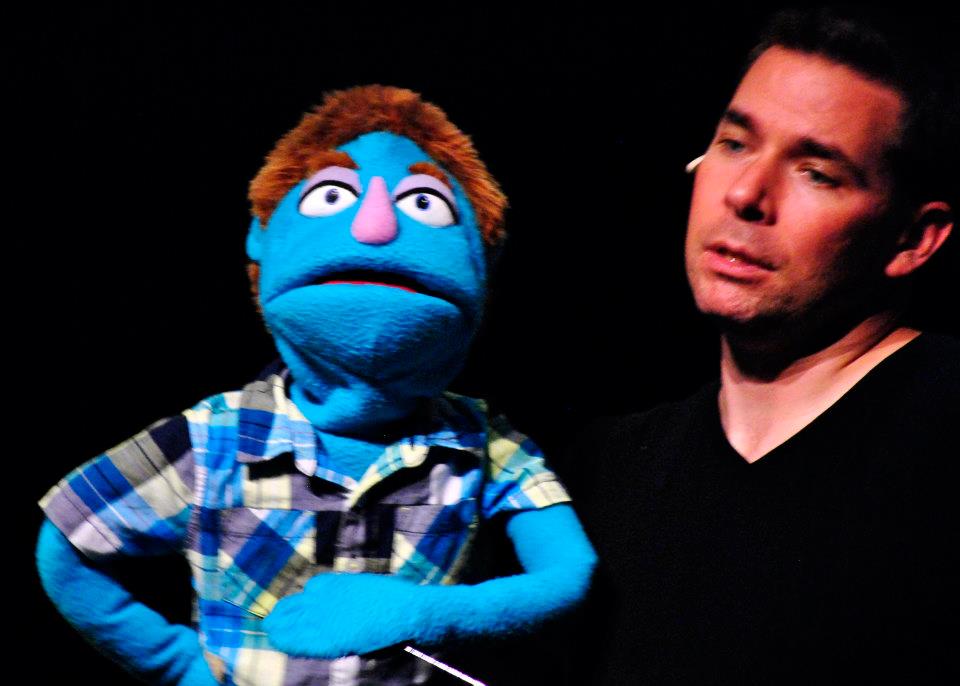“His Audrey II is a botanical Mae West.”
Once again Trustus Theatre knocks another show out of the ballpark. The Little Shop of Horrors was born as a movie way back in 1960. Directed by Roger Corman, the film featured (among others) a young Jack Nicholson. The musical adaptation opened Off-Broadway in 1982 as Little Shop of Horrors. It went on to open in the West End in 1983, Broadway in 2003, and has lived on in numerous tours and revivals, and countless community theatre productions. It has been produced more than once on various Columbia stages, with sold-out houses each time.
The show opens in a dark and dingy Skid Row. A Greek Chorus harkens back to the girl groups of the ‘50s in the prologue It’s funny, it’s sharp and it’s beautifully choreographed.
Our hero is Seymour Krelborn, an orphan employed in Mr. Mushnik’s run-down flower shop. (Of course it’s run-down. It’s in Skid Row.) His co-worker, Audrey, joins him in lamenting their lot and wondering if there is any escape to a better life. Seymour is seriously crushing on Audrey, bless his nebbish little heart. Audrey is in an abusive relationship with a frighteningly sadistic dentist. Mr. Mushnik bemoans the lack of business and wonders if it might be time to close the shop for the last time.
On the possible last day of business at Mushnik’s, Seymour comes in with a mysterious “exotic” plant. He suggests to Mushnik that if they put the plant in the front window, it might attract the customers they’ve been sadly lacking. With Audrey’s help, he convinces Mushnik to give it a try. Wondering what to call the plant, Seymour gallantly dubs it “Audrey II.”
Sadly, Audrey II weakens and appears to be dying despite Seymour’s valiant attempts to pamper and nurture. One evening, an accidental prick of Seymour’s finger gives Audrey II a taste of her favorite treat; the way to A2’s heart is blood. And chaos ensues….
Kristan Claiborne, Abby Smith, and Mel Driggers are the “Greek Chorus as Ronettes.” They have gorgeous voices, and their tight harmonies are a counterpoint to the drab, dreary set and the drab dreary costumes and the scary underbelly of our story. “The human race suddenly encountered a deadly threat to its very existence. And this terrifying enemy surfaced, as such enemies often do, in the seemingly most innocent and unlikely of places.”
The residents of Skid Row, Seymour, Audrey, and Mushnik are all yearning for something more, something better. Audrey “can’t” leave her abusive boyfriend because she sees him as a way out. Audrey II seemingly gives these characters the answers to their dreams. But (and there’s always a “but”) at what price? How far are our loveable ragtag residents willing to go to make their dreams come true.
Jessica Fichter’s (Trustus Theatre’s executive director — see our interview with Ms. Fichter in the spring 2023 issue of Jasper Magazine) vision of the piece makes this so much more than a musical with a puppet. The inequities of society, the substandard living conditions in which a frightening number of people live, underemployment, and the greedy, vociferous specter of insatiable capitalism are brough to life with vivid clarity. The set puts the audience square in Skid Row with its haphazard angles and dim, dingy lighting. (Warning – there is a “fog” effect from time to time. Nothing major, but if your sinuses are sensitive you might want to sit further back.) Janet Kile’s costumes are realistic and evocative, and each character is dressed perfectly. Randy Moore outdid himself (again) as Musical Director. Matthew DeGuire served as Props Master, and I do hope he had a dozen people helping him backstage. What a herculean task that had to have been. Every technical aspect of this show was without visible flaw (and I say “visible” because all manner of chaos can happen without the audience ever knowing it). Every member of the crew deserves the same kudos as the cast.
And what a brilliant cast. (I’ll attempt to mention them in order of appearance.) As mentioned earlier, the “Ronettes” were perfection. Applause again to Kristan, Abby, and Mel. Katrina Patrice is stunning and funny and spot on in every role she takes on, and her blonde wig was just the right touch (IYKYK) Lanny Spires inhabited every one of his many roles to the point of disappearing completely. Jonathan Monk was the only person I could ever imagine playing Seymour. He was so pitiful and hopeful and … accommodating. Brittany Michelle Hammock was a most marvelous Audrey; her vocal quality matches her every mood and move. Hunter Boyle never disappoints. He always puts everything he has into every role he plays, and his Mushnik is no different. He is simply magical. Stann Gwynn is loathsome and despicable and delightful as the sadistic dentist, Orin. I have no idea how he managed to sing “Now (It’s Just the Gas)” while wearing a gas mask, choking, and dying without ever missing a note. He belongs in the same magical category as Hunter.
And then there’s Audrey II. This ain’t no puppet, boys and girls. This is bawdy, bodacious, beautiful Terrance Henderson in all his glory. His voice, his moves, his costumes…. His Audrey II is a botanical Mae West. He is a gift.
This was the first time I’d ever seen Little Shop of Horrors. (I’m skeeved out by puppets.) I’m so glad I saw this one. I’m going back. Everyone should see this show. It’s a perfect storm of theatrical talent, with some of Columbia’s and the Southeast’s finest appearing on and behind the stage. Don’t miss it.












